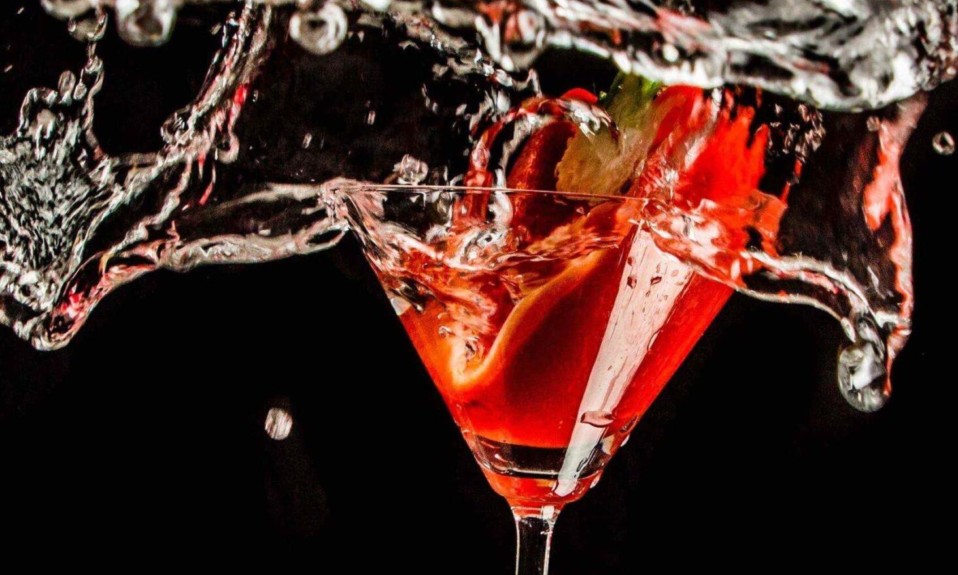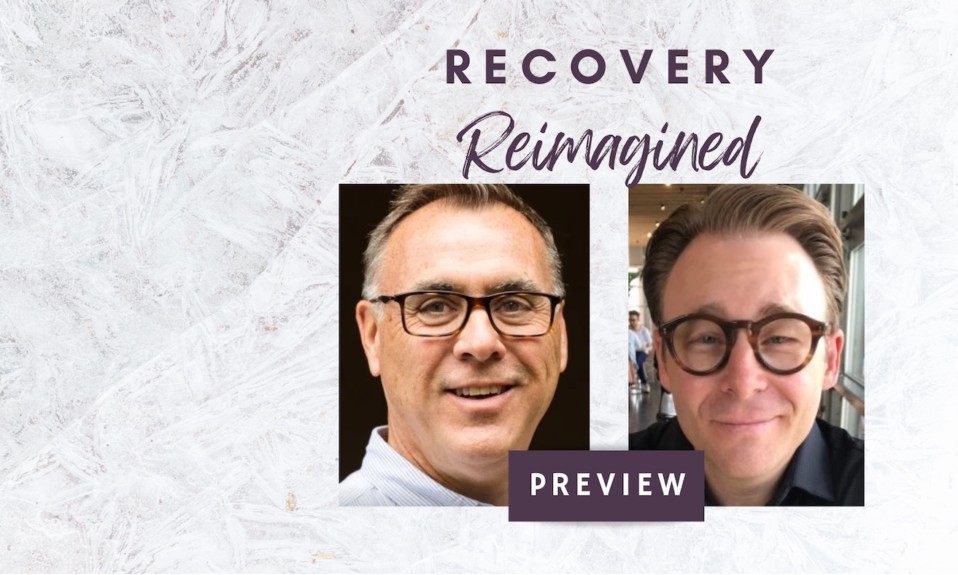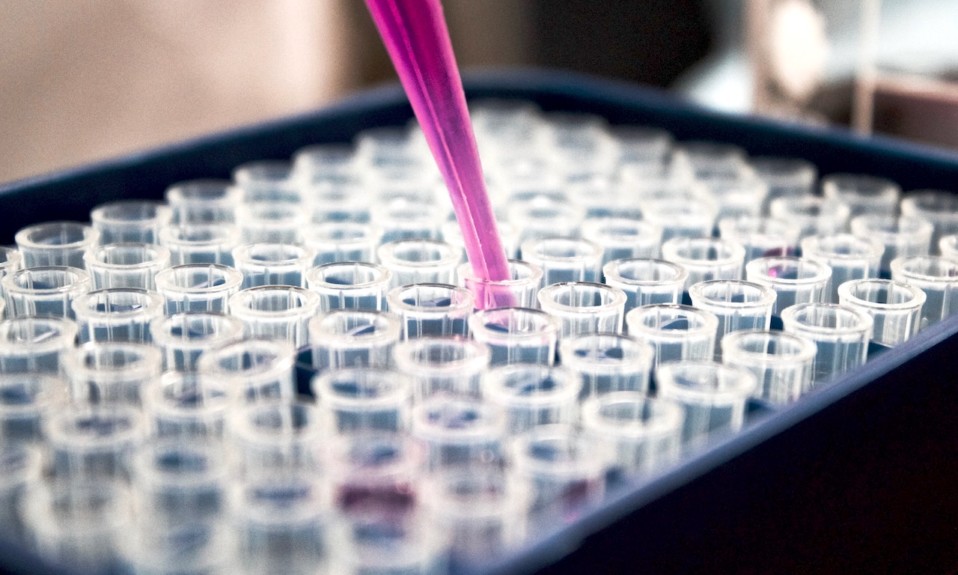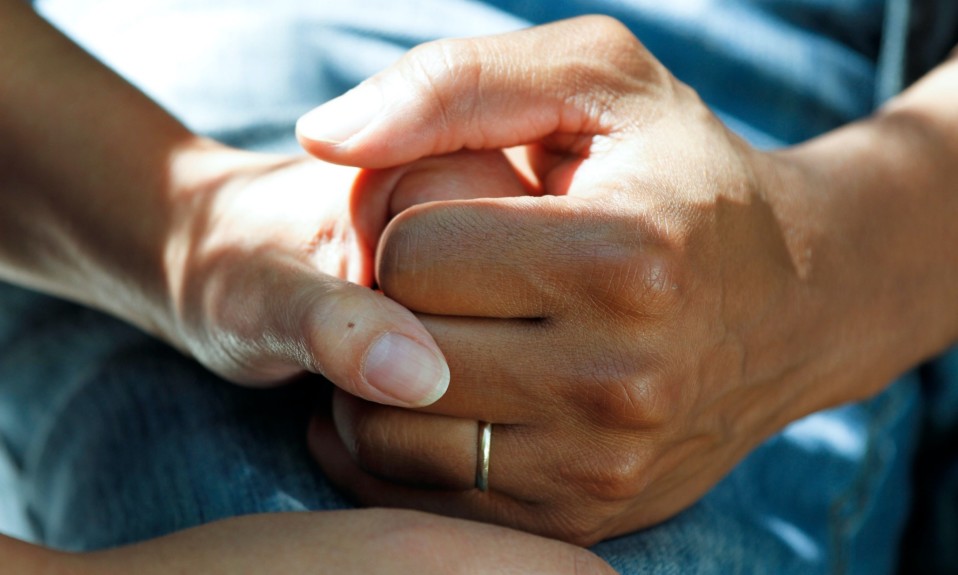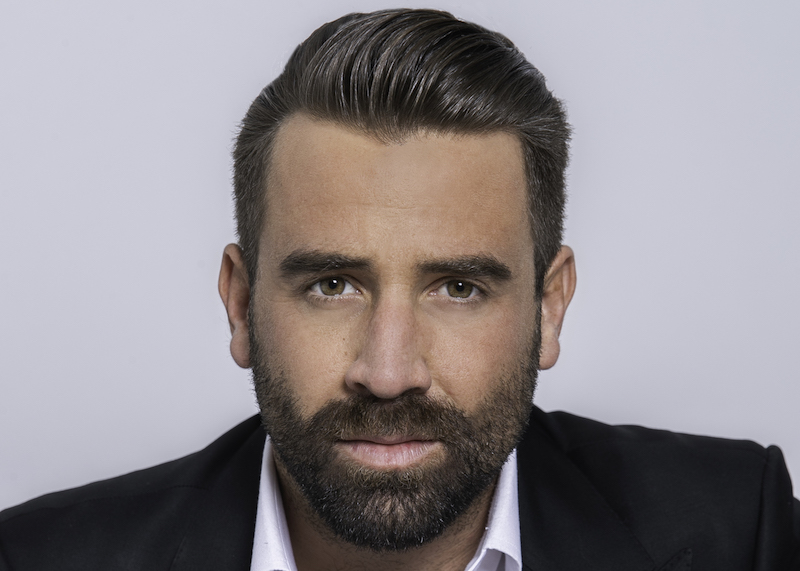Our deep-dive into alcohol use disorder (AUD)—a complex and lethal disease that can be conquered with the right help, care and support
By William Wagner
Alcoholism—or alcohol use disorder (AUD), as addiction experts prefer to call it—is an insidious disease. It has a way of sneaking up on you, and before you even realize what’s what, your life is in tatters. In worst-case scenarios, your career is on the skids, your family is gone and your health is shot.
“There’s not a definitive line [that is crossed with AUD],” says Kenneth Leonard, Ph.D., director of the University at Buffalo’s Clinical and Research Institute on Addictions. “It’s difficult to say exactly when you got to the point where you need to do something about it. Alcohol use disorder is progressive in nature. The cravings and the desires, physical dependence and collapse of a social network happen very gradually over time. It’s difficult to recognize that, and difficult to recognize that it’s your drinking that’s driving it.”
Even more insidious, alcohol can get you even if you never land anywhere near rock-bottom.
According to the Centers for Disease Control and Prevention (CDC), around 100,000 people in the United States die annually from alcohol-related causes. The National Institute on Alcohol Abuse and Alcoholism reports that about 15 million people in the United States suffer from AUD, with less than 10% of those receiving treatment.”
“When I was at the University of Pittsburgh many years ago [as a postdoctoral fellow], I was talking with someone who was in charge of assessing people for liver transplants,” Leonard recalls. “One of the most remarkable things was that many of the people who developed cirrhosis did not have a lot of social problems. They were married, had jobs, had not had legal problems. But they came home every night and drink six, seven or eight beers. After years of dong that, they developed cirrhosis. The health effects of alcohol can be experienced by people who aren’t necessarily alcohol dependent. That’s something I don’t think people appreciate.”
Contributing to the toxicity is the cultural component of drinking—the normalization and even glamorization. Think of the beer commercials that are endlessly beamed into our living rooms: Partygoers are hanging out—beautiful people all around—with laughter filling the air, the big game playing on TV and suds flowing. The implication is that booze is ingrained in our social experience; it’s an awesome way to fit in.
James Balmer, president of the treatment center Dawn Farm in Michigan, takes it a level deeper:
“The primary foundational symptom of an untreated alcoholic or addict is fear,” says Balmer, who is in recovery himself. “That exists before they ever use. They wake up in the morning scared; they go to bed at night scared. They’re the kid in the third-grade class who knows the answer to the question on the chalkboard, and they don’t raise their hand because they don’t want everyone looking at them. Along with that overwhelming sense of dread is an almost existential loneliness—a sense of apartness. They walk into a room full of people who love them and feel completely alone.
There are many more deaths due to alcoholism than opioids. That doesn’t mean one’s worse than the other, necessarily, but alcohol affects every system in the body and contributes to many of the major forms of mortality.”—Annie Peters, Ph.D., LP, director of research and education for the National Association of Addiction Treatment Providers
“Invariably, most alcoholics have some sort of signature experience. When they take a drink, they see the light. Bill Wilson, the cofounder of Alcoholics Anonymous, used to talk about a click. He said he would be restless, irritable and discontent. Then he would take a drink of alcohol, and it would quiet the noise in his head. The fear goes away.”
Ultimately, however, so can everything else. According to a study by the Centers for Disease Control and Prevention (CDC), around 100,000 people in the United States die annually from alcohol-related causes. The National Institute on Alcohol Abuse and Alcoholism reports that about 15 million people in the United States suffer from AUD, with less than 10% of those receiving treatment.
“We don’t talk enough about how powerful alcohol is, how much of a problem alcohol is for so many people,” says Ariel “Air” Britt, senior director of the SAFE Campuses initiative for the Denver-based SAFE Project (Stop the Addiction Fatality Epidemic). “It’s still one of the top killers.”
And even if alcoholism doesn’t literally kill you, it has the power to “take a person’s spirit,” as Annie Peters, Ph.D., LP, director of research and education for the National Association of Addiction Treatment Providers (NAATP), puts it.
Myths About Alcoholism
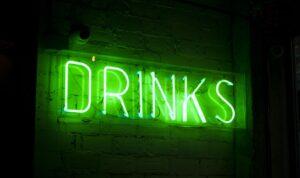
Despite substantial advances in learning about and treating alcoholism, misunderstandings persist.
They’re embedded in our culture and are still being pried out by addiction experts. A few of the most glaring myths:
“I Can Hold My Liquor”
This doesn’t mean you’re a stud, nor does it provide immunity to alcoholism. On the contrary, it makes you more of a candidate to be shredded by alcohol. “One of the things we’ve found is that people who are able to drink more without being impaired are more at risk for alcohol use disorder,” Leonard says. “They’re more likely to drink more and develop a tolerance, whereas people who experience bad effects really quickly shy away from alcohol much more quickly.”
“If You Had More Willpower, You Could Quit”
Willpower is about as likely to conquer alcoholism as it is to cure, say, diabetes. Despite piles of research indicating otherwise, alcoholism still isn’t viewed by many as the disease that it is. Often it’s looked upon as a character flaw.
“The idea that it’s a disease has been around for 50-plus years, but that’s not accepted in a widespread way [among the general population],” Peters says. “The belief that people can choose whether or not to drink heavily or problematically isn’t really accurate. Think of someone in recovery for cancer or heart disease—they’re a ‘survivor.’ But if you’re in recovery for drinking, people think, to some extent, there’s something wrong with you.”
That said, alcoholism can be nipped in the bud, Leonard believes. “It’s not a willpower issue, but one thing we’ve learned since we started doing large studies of the general population is there are a lot of people who have started down the road with alcohol problems,” he says. “But because it’s progressive, some people who have started down the road maybe haven’t gotten all the way down it. The further you go down that road, the more likely it is that you’ll need help of some kind. But you might go just a bit down the road and be able to cut back and take on sort of normal social drinking.”
“Alcohol Is Safer Than Drugs”
The numbers don’t back this up. In 2017, for example, the CDC reported 70,000 deaths nationwide from drug overdoses—a staggering number but still fewer than alcohol’s annual toll. Year after year, decade after decade, alcoholism has put countless souls in early graves.
“We’ve really focused on the opioid epidemic, understandably, for the past few decades,” Peters says. “That’s led to hundreds of thousands of overdoses and deaths. Alcoholism has kind of been pushed to the side as far as our awareness of it. But really, there are many more deaths due to alcoholism than opioids. That doesn’t mean one’s worse than the other, necessarily, but alcohol affects every system in the body and contributes to many of the major forms of mortality.”

Alcohol’s Collateral Damage
Alcoholism isn’t just about the alcoholic. Like a cancer, it spreads to many other areas—to family, friends and beyond. Alcohol’s effect on our societal construct in general has been devastating.
Consider the following national stats and facts:
- Upwards of 10% of U.S. children live with at least one parent who has AUD (Substance Abuse and Mental Health Services Administration, SAMHSA).
- Approximately 55% of domestic abuse offenders were drinking before the assault, according to a recent study (World Health Organization, WHO).
- An alcohol-impaired driver was involved in 10,511 motor vehicle fatalities, or 29% of all traffic deaths, in 2018 (U.S. Department of Transportation).
- Alcohol-related injuries and health issues put a strain on the U.S. economy, costing at least $250 billion a year (CDC).
Medication for alcohol use disorder is not going to provide a cure, but it can be a useful piece of the treatment picture. It’s one of the most underutilized tools that we have to help people. That’s unfortunate.”—Kenneth Leonard, Ph.D., director of the University at Buffalo’s Clinical and Research Institute on Addictions
Treatment for Alcoholism
But alcoholism doesn’t have to end tragically. Plenty of hope exists, even for those currently traveling through the darkest of corridors. (Look at our department “Stories of Hope,” and you’ll see what’s possible.) There are more ways than ever to treat AUD and remain in long-term recovery, including:
12-Step Facilitation Therapy
This is the granddaddy of ’em all. In fact, it’s the basis of Alcoholics Anonymous, which has been around since 1935. The 12-step model aims for abstinence, forged by admitting that you can’t control everything in your life. By working through the 12 steps, you come to realize that your sobriety depends on giving yourself over to a higher power, whatever that might be for you. “Contrary to popular belief, alcoholics do not lack willpower,” Balmer says. “Addiction is not a lack of willpower. The 12 steps allow people to practice acceptance and to surrender. They teach people how to stop running things. If alcoholics learn how to stop running things, the noise in their head starts to dissipate. They stop waking up afraid.”
The 12 steps also deliver a sense of community via meetings that can make all the difference for someone in recovery. “Isolation is such a big part of addiction,” Peters says. “By helping people find resources and friends and a life, there’s not as much of a draw to using. Community is one of the biggest components that helps people change.”
Cognitive Behavioral Therapy (CBT)
CBT is an evidence-based approach that has showed promise in helping patients maintain their sobriety through various techniques that, in a sense, retrain the brain. Says Peters, “It’s about changing your cognition and behaviors. If you can change how you feel and your lifestyle, you can increase your hope and things like that.”
Contingency Management
Reinforcing positive behaviors is the essence of contingency management. “It’s often used with underserved populations where people don’t have a lot of resources,” Peters says. “You’re providing them with things like bus tickets and food vouchers. That may not seem like a long-term solution, but it can really help people get back on track.”
Medication-assisted Treatment (MAT)
Leonard feels MAT has not been used to its potential in the AUD space; mostly it’s associated with opioid abuse. He believes medications such as naltrexone and acamprosate can play an important role in helping people establish a record of recovery. “Medication for alcohol use disorder is not going to provide a cure, but it can be a useful piece of the treatment picture,” he says. “It’s one of the most underutilized tools that we have to help people. That’s unfortunate.”
Other Notable Treatments
- Behavioral couples therapy (BCT)
- Community reinforcement approach (CRA)
- Dialectical behavioral therapy (DBT)
- Harm reduction
- Motivational interviewing
Charting a Path Forward
Given the complex nature of alcoholism, a mix of therapies sometimes works best—maybe the 12 steps and CBT or the 12 steps and motivational interviewing or MAT and BCT. The key is to hit on a formula that clicks for you.
Step No. 1, however, is recognizing there’s a problem in the first place, which is a feat in itself.
“People don’t start off having alcohol use disorder,” Leonard says. “It’s something that’s developed, and it’s developed in a context of behavior that’s normal throughout our society. Drinking is practiced by 70 to 80% of our population. In your early 20s, when most people are doing their heaviest drinking, you may be drinking the same as your cohorts. But then some people progress out of it, and others progress on to having more serious problems.”
Alcoholism Resources
Substance Abuse and Mental Health Services Administration (SAMHSA) Disaster Distress Helpline
TreatmentMagazine.com “How to Find a Treatment Center”
Your TreatmentMagazine.com Alcoholism Primer
The Case for Harm Reduction in Treating Alcoholism (3/16/21)
Which Jobs Have the Highest, Lowest Drinking Rates? (3/1/21)
What Is Medication-Assisted Treatment (MAT) for Addiction? (2/4/21)
Stigma Can Kill: Words Matter in Addiction (2/18/21)
My Loved One Drinks. How Can I Stay Sober? (1/28/21)
Addiction Therapy Spotlight: What Are the 12 Steps in Alcoholism and Addiction? (1/14/21)
Where to Find Help If You Feel Sad About a Parent’s Alcohol Misuse? (1/14/21)
What Can You Do If Your Mom or Dad Drinks Too Much? (1/14/21)
Study IDs New Predictor for Alcohol Addiction (1/6/21)
Study: Even a Little Bit of Alcohol Impairs Driving (1/5/21)
SoberGrid Taps the Power of Social (12/15/20)
Prazosin Helps Reduce Alcohol Cravings (12/1/21)
New Wearable Device Tracks Alcohol Use (11/12/20)
Promising Tech Seeks to Train Brain to Keep You Alcohol-Free (11/10/20)
Beyond the 12 Steps: Alternative Treatment Approaches (11/5/20)
New Mexico Leads in U.S. with Highest Alcohol-related Death Rate (11/2/20)
Pregnancy and Alcohol: Even a Little Is a No-No (10/8/20)
Country Musician’s New “Hard Way to Go” Song Written for the Recovery Community (10/8/20)
Can Your Phone Tell if You’re Drunk? (10/1/20)
Stinking Thinking Leads to Drinking (9/15/20)
Brain Implants Show Promise to Treat Alcohol Abuse (9/7/20)
Psychologist Stanton Peele on Treatment Beyond 12 Steps (7/10/20)
Photo: Hush Naidoo, Stephan Valentin


